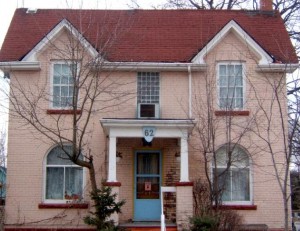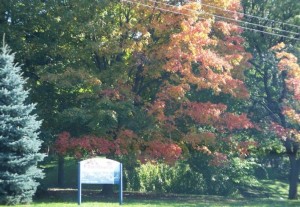The Origins and Development of Dovercourt Village
The Dovercourt Village is also known as Dovercourt Park. This Toronto neighbourhood’s history goes back to the 1870’s, this is when the first residence immigrated to the area. The fist residence came from England, and were quite poor. The area received it’s name from the Denison estate, but we’ll get more into that later.
In 1884, developments were beginning to pick up, and houses began to fill the neighbourhood. The poor English immigrants built one and two bedroom homes made from tar and paper. Back in this time, the neighbourhood was made up of one acre market farms, and the residents of these farms grew lots of produce to sell in town (mainly fruits and vegetables). The market farms (which is where the residence lived) were strictly rented, none of them were actually owned by the residence. These were the worst times of Dovercourt Village, since then things have become much better.
In 1910, the Dovercourt Village area joined the City of York, and soon after the City of York joined the City of Toronto. The annexation allowed this neighbourhood to rapidly stimulate its growth, mainly thanks to proper city services and transportation. Dovercourt Village was fully developed by 1923, but of course it still continues to grow to this day.
Today, Dovercourt Village offers a mixture of land-uses. However the neighbourhood consists mainly of residential and commercial buildings.
The Toronto houses offered here at Dovercourt Village, are typically two to three stories high. Some of the retail buildings also offer apartments or rental houses above, in the higher stories of the building. These Toronto estates are marketed towards lower and middle class incomes. There’s also single-family dwellings in the northern section of the neighbourhood, however the majority of homes are medium-rise apartments. The Denison family estate, which was mentioned earlier, is presently known as the Belle Vue, (aka The Kensington Market).
Businesses in Dovercourt Village are somewhat limited. There’s manufacturing buildings, warehouses, and automotive industries in the area. The Canadian Pacific Railway operates the neighbourhoods main transportation service. Most of the former industrial buildings have been converted to loft condominiums and apartments.
The neighbourhood’s local library (Toronto’s Bloor-Gladstone Public Library), can be found on the corner of Bloor and Gladstone Avenue. The library was built in 1912, and it’s still up and running wonderfully today (over 99 years later!)
Education is important for all residence living in Toronto. Dovercourt Village offers three elementary schools for the younger age group, as well as one secondary school for the teenagers. The colleges and universities are not as close as the elementary and secondary schools, however thanks to public transportation, it doesn’t take long to get to any of the eight post secondary institutes.
The demographics in Dovercourt Village vary a lot. The neighbourhood is an ethnically diverse area, consisting mainly of Portuguese at approximately 13.1% of the neighbourhoods population. The runner up ethnicity is Chinese at approximately 3.5% (this information was obtained from the 2006 Canadian census report). The majority of the neighbourhood is fluent in Portuguese, Italian and English, but like the rest of the City of Toronto, the primary language is of course English
Transportation in Dovercourt Village is offered in two ways for the public. You can catch the railway for quick transportation to anywhere in Toronto, or find the nearest bus stop on either Ossington or Rogers road.
Other Central Toronto Neighbourhoods: The Annex –Cabbagetown –Rosedale –Moore Park –North Toronto –Lawrence Park –Hoggs Hollow –Leaside –Summerhill – Regal Heights –Forest Hill –Chaplin Estates –Davisville Village –King West Village –Dovercourt Village


Speak Your Mind
You must be logged in to post a comment.